Menus
- Two-stroke made in the Czech Republic
- Off-road sport with two beats
- The headlights were missing from the motocross models
- Six Days and Motocross World Championship
- CZ ushered in a great revolution in motocross
- Good-natured powerhouse
- Many old Jawas are still running in the Czech Republic
- Respected values
- Technical data Jawa 553
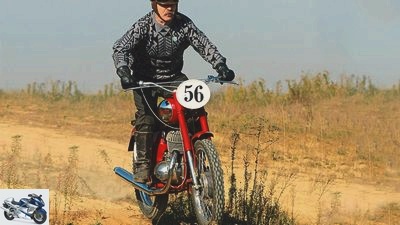
Paulovits
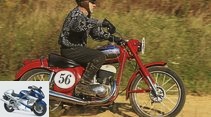
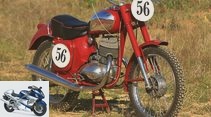


18th photos
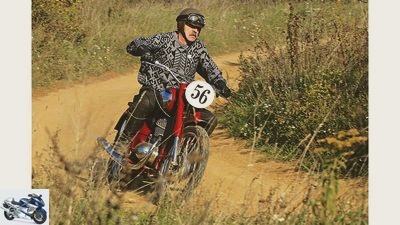
Imre Paulovits
1/18
Former racing driver István Nyitray drove motocross and enduro more than 50 years ago.

Imre Paulovits
2/18
In the classic car scene, however, the Hungarian is best known for his replica brake systems and forks.
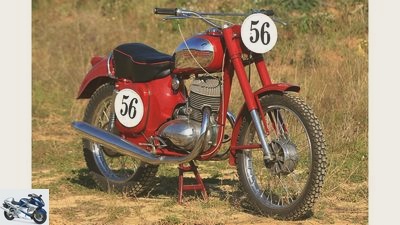
Imre Paulovits
3/18
Much is reminiscent of the 353 street motorcycle. However, the solo seat and the wide handlebars characterize the 553, the cross-country athlete.
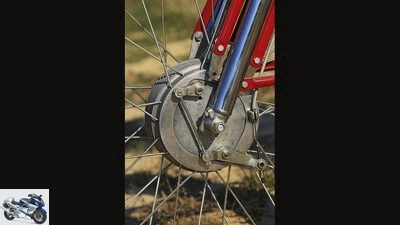
Imre Paulovits
4/18
The complex, small duplex drum can be easily dosed off-road.
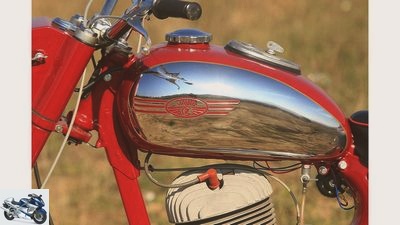
Imre Paulovits
5/18
The tank holds 13 liters.
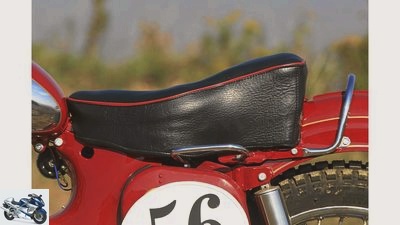
Imre Paulovits
6/18
In contrast to the 353, the all-terrain athlete 553 has a solo bench.
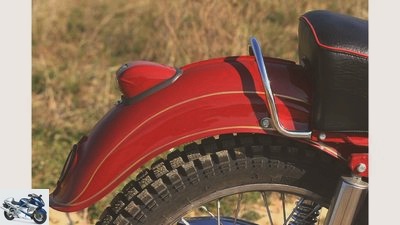
Imre Paulovits
7/18
On the slightly shortened apron …
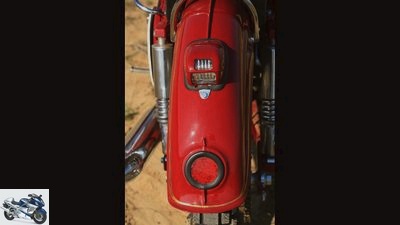
Imre Paulovits
8/18
… is the rear light of the street machine.
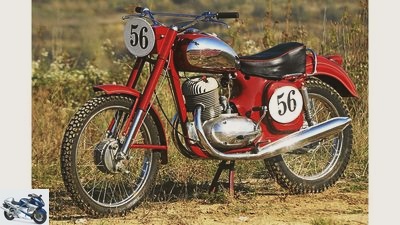
Imre Paulovits
9/18
Well thought-out changes turned the 250 and 350 series Jawas into big sellers.
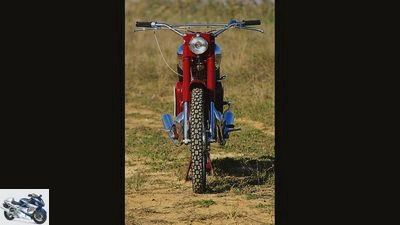
Imre Paulovits
10/18
Narrow and tall, as befits a successful enduro.
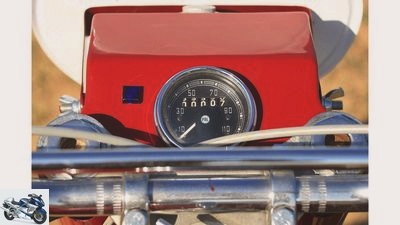
Imre Paulovits
11/18
The simple command center is sufficient.
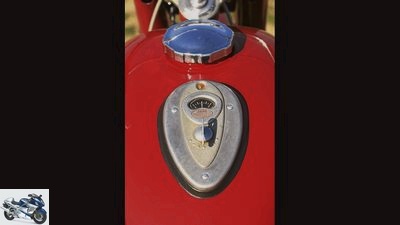
Imre Paulovits
12/18
The ignition lock and an ammeter are located below the tank cap
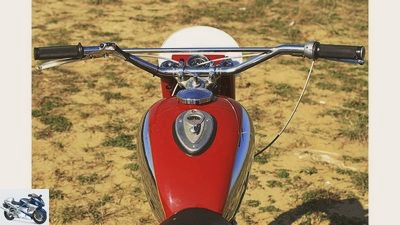
Imre Paulovits
13/18
With the wide handlebars you have the Jawa well under control, and it convinces offroad with a stoic straight-line stability.
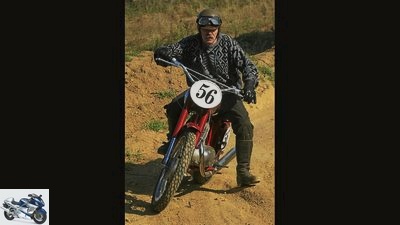
Imre Paulovits
14/18
The first step towards the Jawa restoration took place in 1976 when Nyitray found two Jawa Enduro bikes in the bulky waste.
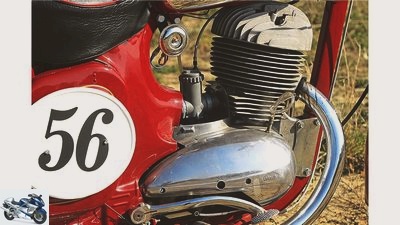
Imre Paulovits
15/18
The long-stroke single-cylinder two-stroke model comes from the street model, but is greatly enhanced in performance.

Imre Paulovits
16/18
The front number plate can be folded up using a wing nut.
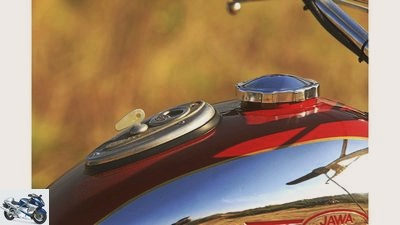
Imre Paulovits
17/18
A lot of effort for mud and dust: The chrome-plated tank is painted and lined.
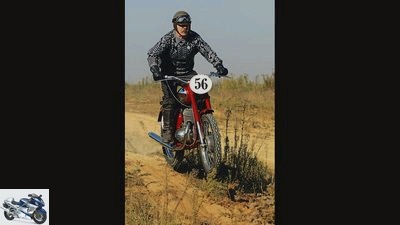
Imre Paulovits
18/18
The Jawa is easy to drive thanks to its wide speed range and good straight-line stability.
Out and about with a Jawa 553
Two-stroke made in the Czech Republic
Content of
In the late 1950s and early 1960s, the Jawa 553 was the first choice for off-road drivers from the Eastern Bloc. Success at the Six Days and in international cross-country competitions showed the potential of the Czech two-stroke engine.
Under the gray mustache I see a mischievous grin, the eyes shine like those of a child amid the wrinkles of the mature man’s face. It’s always the same when a former racing driver rides the motorcycle with which he experienced the peak of his career. “Was it okay for the photos, or should I drive faster?” Asks István Nyitray. The Hungarian, who is best known in the classic car scene for his replica braking systems and forks, drove motocross and enduro more than 50 years ago. Now he has his old one Jawa 553 restored and put back into new condition.
Buy complete article

Out and about with a Jawa 553
Two-stroke made in the Czech Republic
Initially, other projects had priority
So Nyitray could start building the chassis. He gave the engine to a mechanic from the club, who overhauled it with the necessary new parts. Reproductions made it possible to build the exhaust system. On the other hand, Nyitray found the Jawa Pionir lamp and the corresponding speedometer at parts markets. On the other hand, he recreated its angular sheet metal housing himself using contemporary pictures.
After completing all the locksmith work, a professional took care of the painting and the lines, which were done in the original paint thanks to the color card. “The whole thing actually always happened on the side because other projects had priority,” says Nyitray, explaining the duration of the restoration. The result is impressive. After all, I am now standing in front of a historical original that played a key role in the two-stroke engine becoming a force in motorsport. Jawa was one of the driving forces behind this development.
Off-road sport with two beats
While in the 1950s the Italians and the English dominated the cross-country competitions with single-cylinder four-stroke engines, some German plants both east and west of the Iron Curtain favored the two-stroke engine like Jawa and CZ. The basis for the 250 and 350 Jawa were the series machines presented in 1947 under the name Perak (“sprung”). These were the first Jawa models with a rear swing arm. And thus a big step forward in comparison with the 500 ohc pre-war models and their straight rear wheel suspension or even the small models with pressed sheet metal frames and rigid rear suspension.
The new frame was welded together from square profiles. The two-stroke engines were designed with a long stroke. The 250 single-cylinder had a 65 millimeter bore with a 75 millimeter stroke, the 350 two-cylinder bore 58 millimeters, and the stroke 65. In contrast to the street 350 with a 180 degree crank pin offset, the off-road version was a parallel twin.
The headlights were missing from the motocross models
Jawa’s production and street racing machines had 16-inch wheels at the time. In the off-road version, they were 21 inches at the front and 19 inches at the back. To reinforce the terrain frame, two additional tubes were welded under the engine, which led from the central beam in a V-shape to the suspension of the footrests. The other differences compared to the series machines were only narrower fenders, a solo seat and the wider handlebar.
The small headlight of the Pionir moped was installed on the Enduro, which was placed on a square metal box. The rear light of the road machine sat on a slightly shortened fender. The headlights were missing from the motocross models, and the front fender was set higher.
Six Days and Motocross World Championship
Compared to the series 250 with the type designation 353, the off-road machine of the type 553 was fitted with a 28 millimeter passage instead of the 24 Jikov carburetor. A higher compression, changed channels and the modified exhaust resulted in a significant increase in performance. In the enduro trim, the twelve hp of the series motorcycle initially turned into 18 hp, and at the end of the development of the Jawa 553 it was even 25 hp.
Jaromír Cížek, Jawa works driver and European Motocross Champion in 1958, was of great help in this development. In addition to great talents as a racing driver, he also had talent as a developer. His master machine had a short-stroke engine (bore x stroke 70 x 64.5 mm), the piston came from the Jawa car “Minor”.
CZ ushered in a great revolution in motocross
Čižek was not the only top driver for the Czechs. The international six-day race in 1958 in Garmisch-Partenkirchen was won by the Czechoslovak team on their 250cc and 350cc Jawas.
CZ then continued the development of the two-stroke racer, heralding the great revolution in motocross that culminated in winning the 500 World Championship. The heavy four-stroke engines were then retired from the two-stroke engines. The dominance of the two-stroke in the field lasted until the mid-1990s, in the Motocross premier class even until 2002!
Good-natured powerhouse
A short test drive with the 250 shows me why the Jawa 553 was so successful in its day. Awakened to life with a powerful kick, the two-stroke engine gives an unmistakable understanding of who is in charge of the ring with a robust, steady bark even at idle. Right above idle speed, it pushes properly in order to then deliver its power very evenly over a surprisingly wide speed range. In the speed basement, some street 250s of those days had a similar amount of steam, but at the top, not nearly as much reserves. From today’s perspective, the clutch and gearshift work pretty hard and imprecisely, but once met the requirements exactly.
Even with the chassis, we would complain about the too hard and underdamped suspension elements today. At that time, however, the western manufacturers couldn’t do better either. This also applies to the small duplex drum brake, which, despite its fine mechanics, only has a reasonably sufficient effect off-road, but is easy to dose. The straight-line stability of the Jawa 553 is a good example of this on off-road slopes; neither ruts nor bumps disturb it. Together with the easy-to-use power of the engine, you quickly find confidence in the motorcycle, which is extremely easy to control.
Many old Jawas are still running in the Czech Republic
That’s why this restored Jawa 553 was not a showpiece for the showcase. On nice weekends, her owner moves her on quiet side streets thanks to vintage car approval, but now and then he also takes her into the terrain. “It is really good touring with her,” reveals Nyitray. However, he has eliminated all coffin nails from the past. “The weakness of the Jawa 55 years ago was its electrics,” he knows. “The relays in the controller burned through constantly, then the charging current was gone.
Because there are many old Jawas running in the Czech Republic, specialists have developed modern alternators with electronic ignition for them that can be screwed onto the original base plate without any problems. This makes my Jawa 553 so reliable that I will have fun with it for a long time. “
Respected values
The off-road jawas were not only valued during their active days. Today, a loyal fan base has gathered around the top two-stroke engines from Pankrác, even though they were completely forgotten at times after the fall of the Iron Curtain.
Not only fans from the Czech Republic or Eastern Europe have long since remembered them, but also former competitors from the West who have fulfilled a dream with the once unbeatable wine-red off-road machine. As a result, prices have risen sharply in recent years. But that’s only fair. Because with the well-thought-out railing racer, a lot of things that glistened turned gold.
Technical data Jawa 553
Imre Paulovits
In the classic car scene, the Hungarian István Nyitray is best known for his replica brake systems and forks.
engine:
- Air-cooled single cylinder two-stroke engine
- slot controlled
- Bore x stroke 65 x 75 mm
- Compression 8.25: 1
- Cubic capacity 248.5 cm³
- Output 25 hp at 7000 rpm
Power transmission:
- Multi-disc oil bath clutch
- Four-speed transmission
- Chain drive
landing gear:
- Single-loop square tube frame
- Rear swing arm with two struts
- hydraulically damped telescopic fork in front
- Wire spoke wheels with steel rims
- Front tires 3.00-21, rear 3.50-19
- 180 mm duplex drum brake at the front
- 180mm simplex rear drum brake
mass and weight:
- Wheelbase 1435 mm
- Dry weight 125 kg
- Tank capacity 13 liters
- Top speed: around 120 km / h
Related articles
-
Trial Jawa put under the microscope by Gunter Ruttloff
markus-jahn.com 14th photos markus-jahn.com 1/14 Trial Jawa by Gunter Ruttloff. markus-jahn.com 2/14 The fine art of improvisation and solid…
-
Jawa Perak (2020) – New model in bobber garb
Jawa 8th photos Jawa 1/8 The new Jawa Perak will hit the streets in 2020. Jawa 2/8 However, it is only offered in Asia. Jawa 3/8 The chic bobber look…
-
Alan Cathcart 14th photos Alan Cathcart 1/14 Technical miracle: the Jawa 350 V4 Alan Cathcart 2/14 Ivy in Assen: After taking the lead in the meantime,…
-
Frank Ronicke Model history Jawa 350 The time machine Contents of The decades passed, but the Jawa 350 braced itself with its 1947 as …
-
Jawa 650 Style – Technical data
Jawa 650 Style technical data Overview Testing Technical specifications engine Number of cylinders, type 1, engine power 35.4 kW / 48.1 PS at 6,500 rpm…
-
Jawa 125 Sport – Technical data
Jawa 125 Sport technical data Overview Testing Technical specifications Downloads -Market offers Related articles Ducati ST 4 – Technical data Ducati ST…
-
Jawa 650 Dakar – Technical Specifications
Jawa 650 Dakar technical data Technical specifications -Market offers Related articles Ducati 620 Sport – Technical Specifications Ducati 620 Sport…
-
On the move: 30 years of GS models from BMW
Frank Herzog 71 photos BMW 1/71 1985: Little Gaston Rahier fights his way through the desert again with his huge HPN boxer and can successfully defend…
-
Driving report Yamaha YZ 400 F
Driving report Yamaha YZ 400 F Menopause Times are changing: Small four-stroke crossers will come and really heat up the sedate steam hammers like the…
-
On the move: the BMW GS conversion by BMW developer Laszlo Peres
Jahn On the move: BMW GS conversion The BMW GS from BMW developer Laszlo Peres Content of Former BMW developer and off-road specialist Laszlo Peres gets…